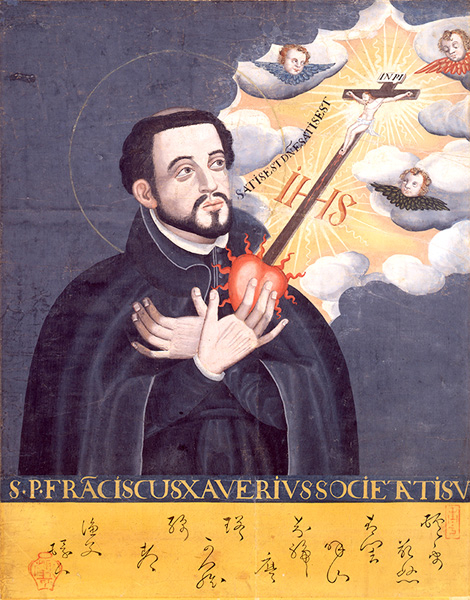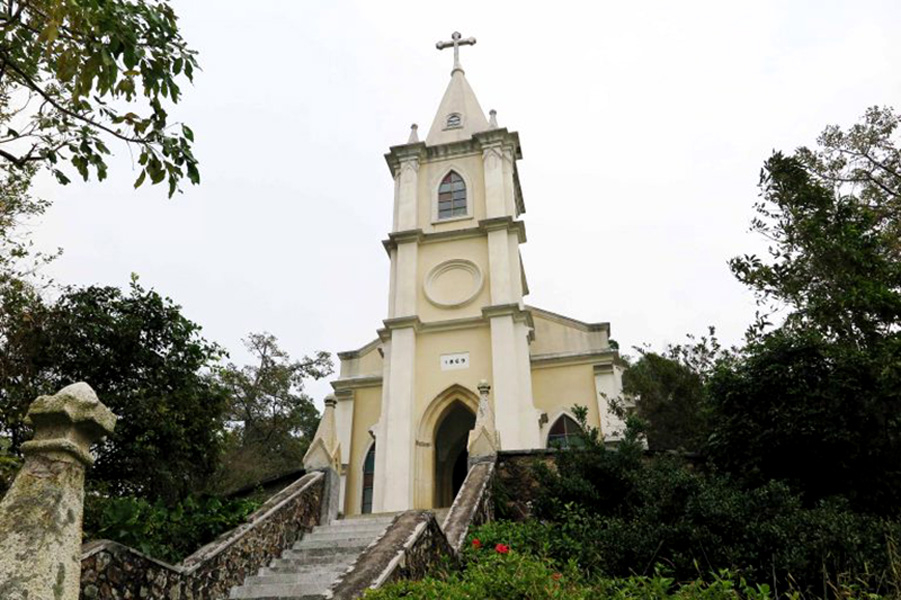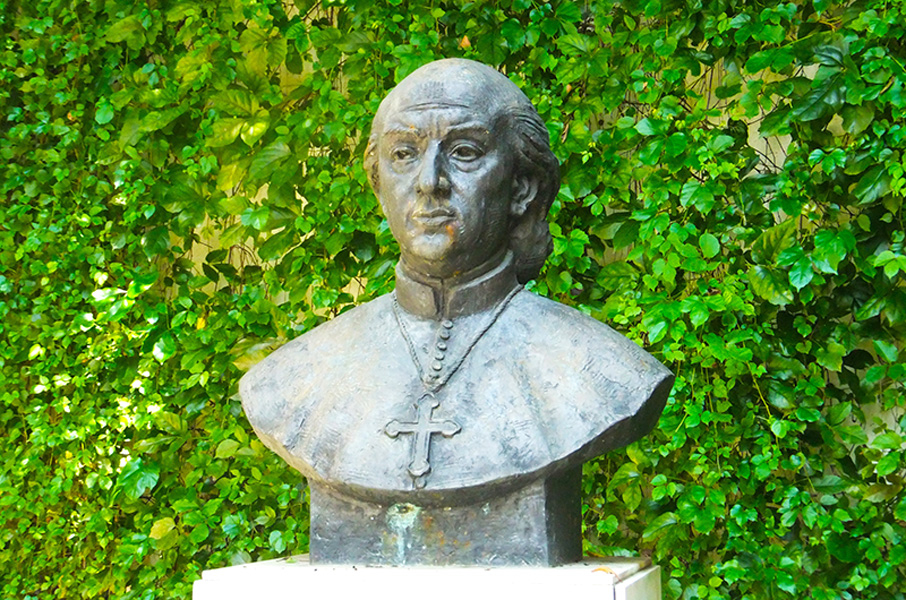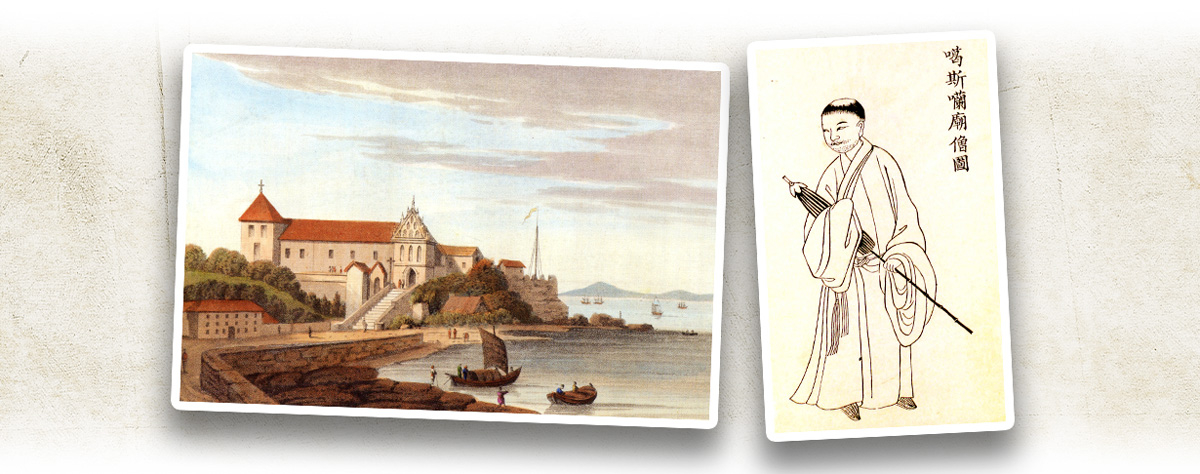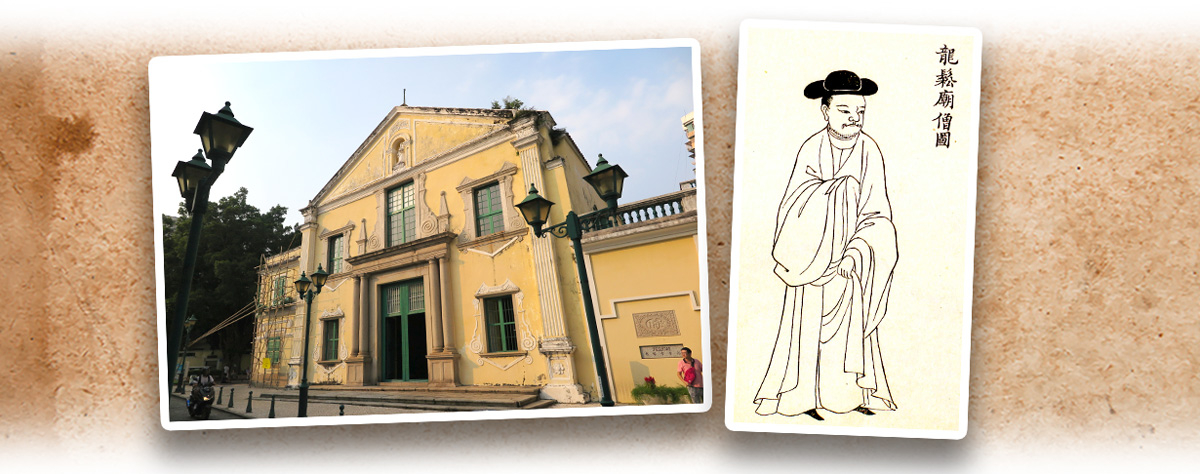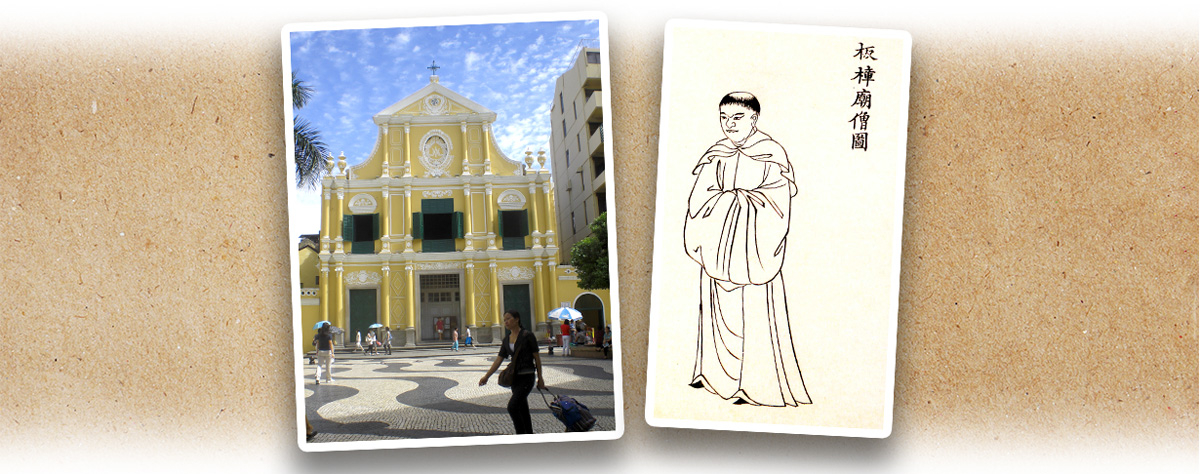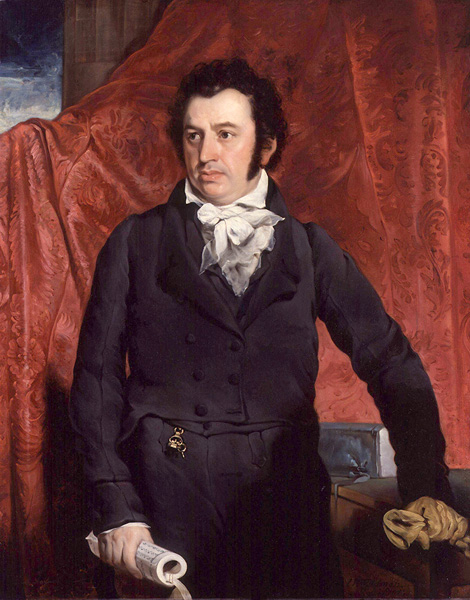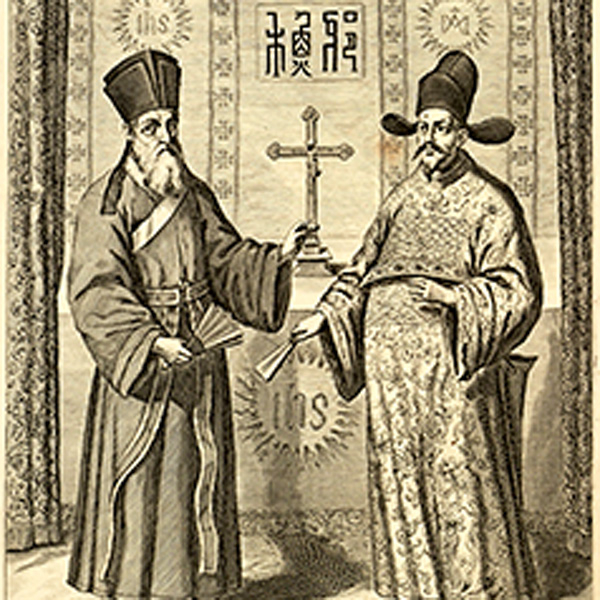The Portuguese changed the landscape of trade in Asia and brought Catholicism to the continent. Jesuit St. Francis Xavier came to the Far East with the intention of preaching Catholicism to the Japanese and the Chinese in 1546. However, he died on Shangchuan Island (上川島) in 1552. His cause was carried on by his fellow missionaries who came to China on the merchant fleets and settled in Macao later.
The Jesuits arrived in Macao on the heels of the Portuguese, who gained residence in Macao in 1557. Soon, several churches were built, including the St. Anthony’s Church, the St. Lawrence’s Church, and the St. Lazarus’ Church. Apart from the Society of Jesus, the Franciscans, the Augustinians, and the Dominican Order also had a presence in Macao with their monasteries and churches. In 1576, the Catholic Diocese of Macau was established, which dealt with affairs in Asia, including China, Japan, and Vietnam. Macao became a centre of Catholic missionary work in the Far East.
Although the Ming dynasty (明朝) restrained the spread of Catholicism in China, it granted the missionaries, among whom were Matteo Ricci and Johann Adam Schall von Bell, access to Beijing (北京). In early Qing dynasty (清朝), the court took a liberal attitude toward the Catholics. However, it clashed with the Roman Catholic Church during the Chinese Rites Controversy, and Emperors Yongzheng (雍正) and Qianlong (乾隆) both ordered bans on Catholicism.
Protestant missionaries also came to preach in China and Southeast Asia in the 19th century. Robert Morrison from the London Missionary Society arrived in Macao in 1807. He pioneered the Protestant missionary work in China.
|
|
How did Matteo Ricci and other Jesuits introduce Catholicism to the Chinese? |
|
|
See answer below. |
St. Francis Xavier was a founding member of the Society of Jesus. He reached Asia with the Portuguese fleets in 1541 and arrived in Japan in 1549. When preaching in Japan, he noticed the country was heavily influenced by Chinese culture, and therefore decided to make China his missionary destination in the hope that success there could promote his cause.
The Society of Jesus, founded in 1534 by San Ignacio de Loyola, St. Francis Xavier, and others, aimed at internally revolutionise the Roman Catholic Church in response to the Reformation in the 16th century. The Roman Catholic Church recognised the Society of Jesus as a Catholic order in 1540. The Society expanded throughout Europe and made its way to Asia that the Portuguese newly discovered. St. Francis Xavier travelled to India, China, Japan, and other Asian countries with the Portuguese fleets in 1541. After his death, the Jesuits continued to carry out missionary work in China, with Macao as their home base.
St. Francis Xavier’s graveyard on Shangchuan Island. He landed on Shangchuan Island in 1552, ready to smuggle into China to start his missionary work. Unfortunately, he died on the island.
D. Belchior Carniero Leitão S.J., the Diocesan Administrator of the Catholic Diocese of Macau.
D. Belchior Carniero was sent by the Roman Catholic Church to Macao to manage the church. He arrived in Macao in 1568 and established the Santa Casa da Misericórdia (Holy House of Mercy) for charitable and relief work. Later, he also founded a hospital (St. Raphael Hospital) and a leprosy sanatorium. Apart from introducing charity to Macao, Carniero acted as a mediator between Portuguese and Spanish religious groups. In 1576, he became the Diocesan Administrator of the Catholic Diocese of Macau, directing church affairs in Macao, China, and Japan until 1581 when he resigned. He passed away two years later.
St. Anthony’s Church and a picture of a monk in St. Paul’s Church. The Society of Jesus was one of the earliest Catholic missions came to China. After Macao’s opening to foreign trade, they built the St. Anthony’s Church, the St. Lawrence’s Church, and the St. Lazarus’ Church.
Left: Jesuit Alessandro Valignano, a supervisor of affairs in the Far East; Right: St. Paul’s College before it was later lost to a fire.
Alessandro Valignano came to Macao in 1578 and oversaw the Jesuits’ missionary work in China and Japan. He established St. Paul’s College in 1594, the first western-style tertiary education institution in the Far East.
Macao was the centre of missionary work not only in China but also in Japan in the 16th century. After St. Francis Xavier’s visit to Japan in 1549, Catholicism quickly spread in the country. Japanese Daimyo (feudal lords) such as Ōmura Sumitada and Ōtomo Sōrin were converted and jointly sent the Tenshō embassy to Europe. Valignano planned to build St. Paul’s College to train Japanese friars in 1594. Many Japanese friars received training in Macao and continued missionary work in Japan as clergies after their return. However, many of them were martyred or found shelter back to Macao when Japan released several decrees banning Catholicism in 1587.
The Spanish Franciscans attempted to preach in Guangzhou (廣州) in 1579 but failed. They were expelled to Macao and there they built the Franciscan Monastery. Unfortunately, the Monastery was demolished in the mid-19th century.
The Augustinians established the St. Augustine’s Church in 1591, referred to by the local Chinese as Long Song Miu (Temple of the Long-whiskered Dragon) because the fan palm leaves on the rooftop appeared to be dragon’s whiskers floating in the wind.
The Spanish Dominican Order established the St. Dominic’s Church in 1591. It was referred to by the local Chinese as Ban Cheung Miu (Temple of Camphor Wood Planks) for its material.
When Matteo Ricci and other Jesuits preached to the Chinese, they respected Chinese customs including the worship of heaven, ancestors, and Confucius, an attitude that was stipulated in the “Directives of Matteo Ricci”. However, these acts of worship were seen by the Roman Catholic Church as deviation from Catholic doctrines. To rectify this, the Church sent Charles-Thomas Maillard de Tournon to China to declare the prohibition of such practices. As a result, the Qing court and the Roman Catholic Church clashed, which was known as the “Chinese Rites Controversy”. Although missionaries at the Qing court kept their positions, the court ordered a ban on religious activities during the reigns of Emperors Yongzheng (雍正) and Qianlong (乾隆). In 1747, a monastery in Macao (Seminário do Santo Amparo) was closed down for having preached to the Chinese.
The church in the St. Joseph’s Seminary. The Society of Jesus obtained this piece of land in 1728 to build residential complexes and a seminary for missionaries sent to China and Southeast Asia.
Robert Morrison’s arrival in Macao in 1807 commenced the Protestant missionary work in China. He was dedicated to the Chinese translation of texts including the Bible, A Dictionary of the Chinese Language, and many missionary teaching pamphlets.
|
|
How did Matteo Ricci and other Jesuits introduce Catholicism to the Chinese? |
|
|
After Alessandro Valignano arrived in Macao in 1578, he requested missionaries to learn the Chinese language and culture so that they could illuminate Catholicism in Chinese. When Matteo Ricci and Michele Ruggieri started missionary work in Guangdong (廣東) in 1583, they called themselves monks. However, after realising monks’ relatively low social status in the Ming dynasty, they approached officials and intellects as Confusian scholars and intrigued them with western science and technology. In 1600, the emperor granted the Jesuits, including Ricci, long-term residence in Beijing and permission for missionary work. A number of officials, such as Xu Guangqi (徐光啟), Li Zhizao (李之藻), and Yang Tingyun (楊廷筠) were early Catholic converts. |
Photo courtesy of Mr. Alex Lou, Vice Chairman of The Heritage Society.





